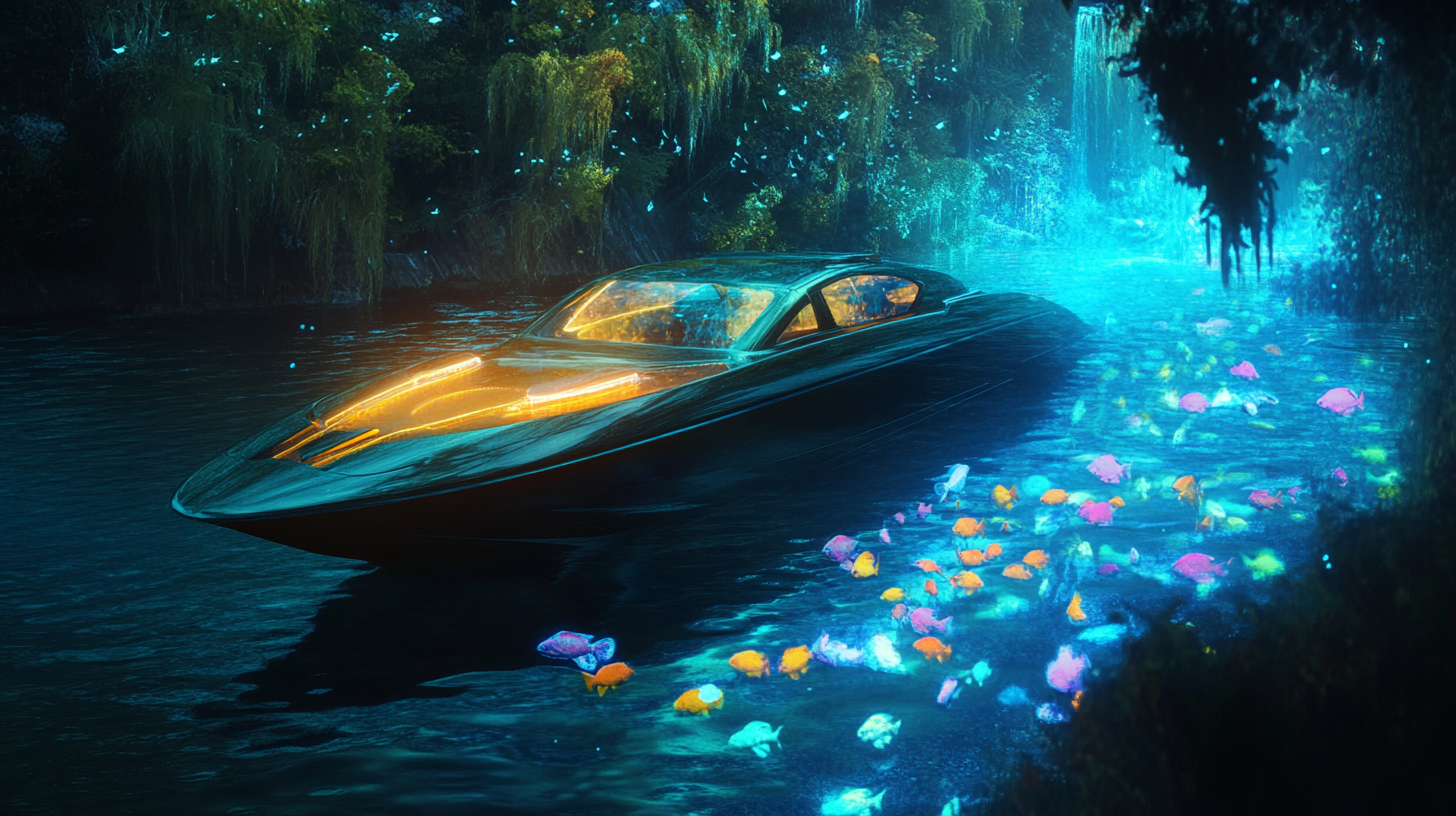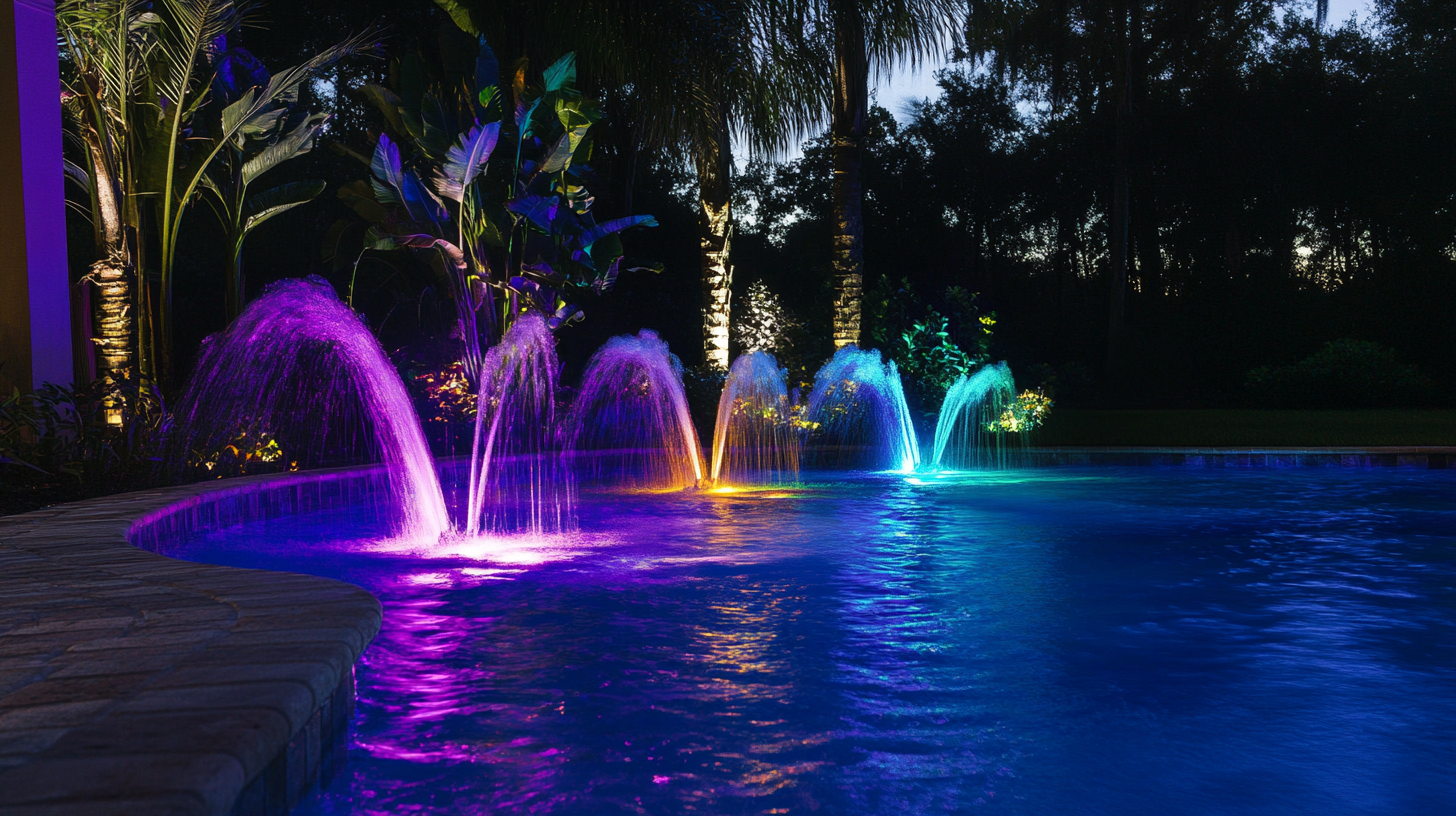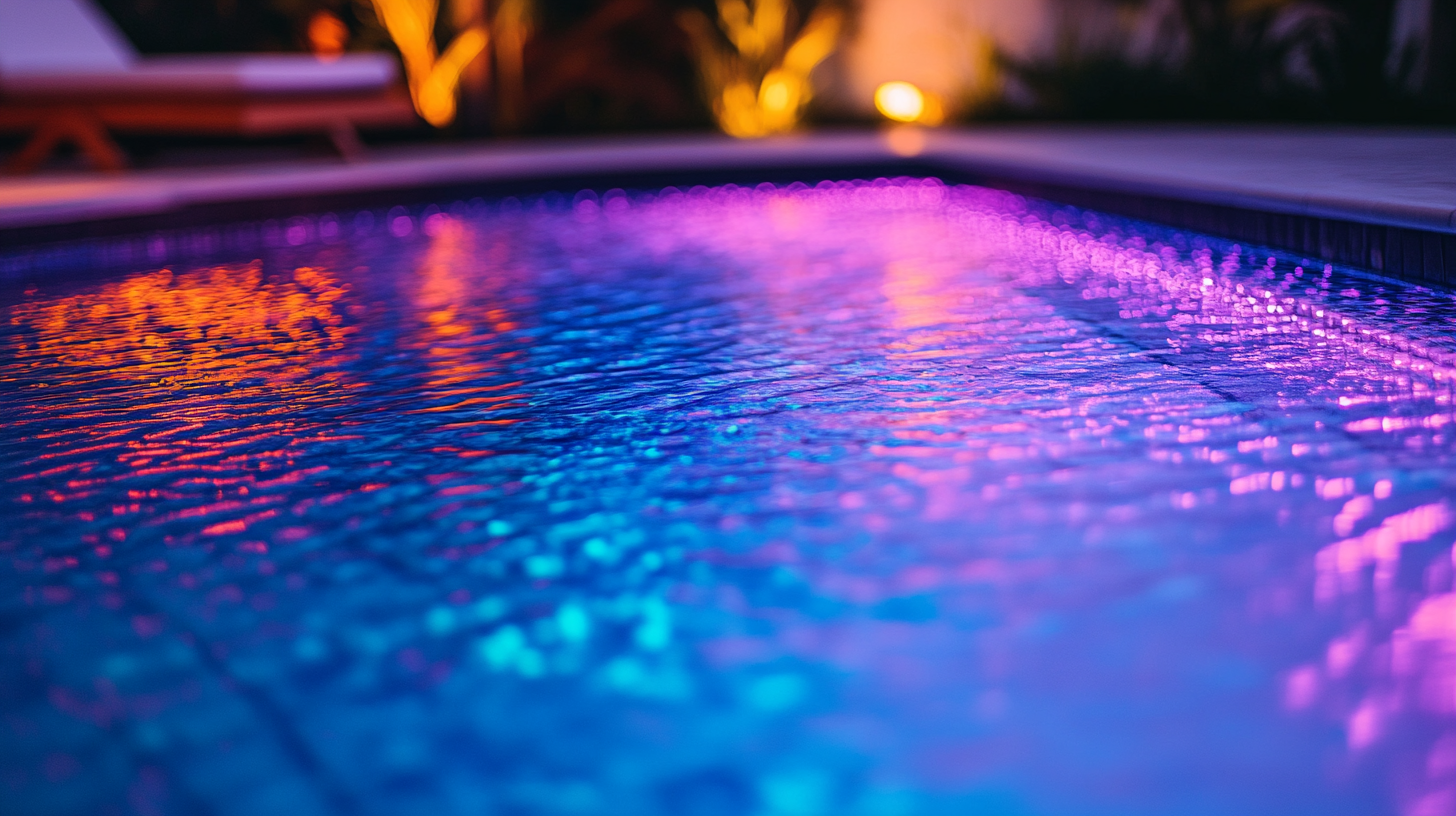Underwater boat lights: a complete buyer’s guide
Imagine gliding through the tranquil waters at night, your boat casting an enchanting glow in its wake. This is just one of the many benefits that come with installing underwater boat lights. These dazzling illuminations are not just about aesthetics; they offer several practical advantages that make them a must-have item in your collection of boat accessories. First and foremost, they significantly enhance visibility during night-time excursions. Whether you’re docking in a poorly-lit marina or navigating through a narrow channel, underwater lights provide the extra marine lighting you need to maneuver safely.
Another important benefit is the element of safety. Much like headlights on a car, underwater boat lights illuminate obstacles such as rocks, debris, and even marine life that could pose a threat to your vessel. Increased visibility helps you avoid mishaps, ensuring a smoother and safer voyage. Furthermore, these lights have a unique way of attracting marine creatures, making them perfect for fishing enthusiasts. Imagine your delight as colorful fish swarm around your boat, drawn in by the shimmering glow. Not only does this make for a more exciting fishing experience, but it also provides exceptional opportunities for night-time photography and underwater videography.
Having a well-lit boat is also a potent deterrent against theft. A brightly lit vessel is less appealing to would-be thieves, giving you peace of mind whether you’re anchored in a secluded bay or docked at a busy marina. Besides security, the visual appeal these lights add cannot be overstated. They transform your boat into a floating spectacle, ideal for social gatherings and creating unforgettable memories. Considering these benefits, investing in underwater boat lights should be high on your list if you’re following a complete buyer’s guide for boat accessories. Ready to light up the night? Dive into the next sections to discover the different types and key features you should consider before making a purchase.
Types of underwater boat lights
When it comes to choosing underwater lights for your boat, you’ll find a variety of options on the market, each with its own unique benefits and ideal use cases. Generally, these lights can be categorized into three main types: halogen, xenon, and LED. Each type has its own set of characteristics, making them suitable for different boating needs and preferences.
Halogen lights are the veterans in the underwater lighting world. They are known for their high-intensity output and relatively warm color temperature. However, they tend to consume a lot of energy and generate substantial heat, which can be a concern for extended usage. Halogen lights are often favored for their ability to penetrate murky waters, making them excellent choices for deeper and cloudier environments. They are also relatively affordable, which makes them attractive to those on a budget.
Xenon lights, often referred to as HID (High-Intensity Discharge) lights, provide a brilliant white light that closely mimics natural daylight. These lights are more energy-efficient than halogen but still generate some heat. They boast a longer lifespan and offer highly effective illumination, which is perfect for those looking for powerful and consistent marine lighting. On the downside, xenon lights tend to be more expensive, and their installation can be more complex, requiring specific ballasts and wiring configurations.
The latest and most popular option among boating aficionados is LED underwater lights. LEDs have revolutionized the marine lighting scene with their energy efficiency, extensive lifespan, and minimal heat generation. Available in a dazzling array of colors, LEDs provide boat owners with unparalleled flexibility to create the perfect ambiance. Whether you’re looking to showcase a vivid display of colors or a subtle, elegant glow, LED lights are the way to go. They are also more durable and resistant to vibrations, making them ideal for the harsh marine environment. Though they may have a higher initial cost compared to halogen lights, the investment pays off in the long run due to their longevity and lower energy consumption.
Each type of underwater light has its place in a comprehensive buyer’s guide. Your choice will depend on your specific needs, whether it’s the budget-conscious reliability of halogen, the potent brightness of xenon, or the versatile efficiency of LEDs. Consider the environment where you’ll be using your boat, your aesthetic preferences, and your budget to make an informed decision. Stay tuned as we delve into the key features you should look for when selecting underwater lights for your boat.
Key features to consider
When embarking on the journey to find the perfect underwater lights for your boat, understanding the key features to consider is essential. One of the primary aspects to examine is the brightness and lumen output of the lights. The brightness level you need will largely depend on the purpose of the lighting. For general visibility, a moderate lumen output may suffice, but if you’re looking to illuminate a large area for night diving or showcase your boat’s beauty during evening parties, a higher lumen output will be necessary. Ensuring you have enough light to effectively see your surroundings isn’t just a matter of aesthetics—it’s crucial for safety.
Another critical feature is the color of the light. Underwater lights are available in a spectrum of colors, from traditional white and blue to vibrant greens and reds. Each color has its own benefits: blue lights, for instance, penetrate water more effectively and are less likely to attract insects. Green lights are often favored by fishing enthusiasts as they attract a variety of fish species. If you enjoy a bit of customization, some LED options offer color-changing capabilities, allowing you to set the mood according to your activity or preference.
Durability and material construction are also significant considerations in any buyer’s guide for marine lighting. The underwater environment is harsh, with constant exposure to saltwater, UV rays, and potentially rough conditions. As such, it’s imperative to select lights constructed from durable materials like marine-grade stainless steel, bronze, or high-quality plastics that are UV resistant. These materials not only withstand corrosion but also provide a longer lifespan for your underwater lights, ensuring you get the most value out of your investment.
Energy efficiency is another key feature, especially for those who spend extended periods on the water or operate their lights frequently. LED lights stand out as the champions of energy efficiency, consuming significantly less power than their halogen or xenon counterparts. This efficiency not only extends battery life but also reduces the need for frequent maintenance and bulb replacements. For eco-conscious boaters, choosing energy-efficient lighting options also minimizes the environmental impact.
Consider the ease of installation. Some underwater lights are designed for straightforward installation, requiring basic tools and minimal effort, while others may necessitate professional installation. Factors like the mounting style—whether it’s surface-mount or through-hull—will influence the complexity of installation. Additionally, check if the lights come with all necessary mounting hardware and clear instructions, which can save time and prevent headaches during the setup process.
Another feature to look at is the compatibility of the lights with your boat’s electrical system. Ensuring the lights match your boat’s voltage requirements (usually 12V or 24V) is crucial to avoid electrical issues and guarantee optimal performance. Some advanced systems also offer features like dimming capabilities, remote control, or integration with existing marine electronics, providing added convenience and customization.
Lastly, consider the warranty and customer support offered by the manufacturer. High-quality underwater lights often come with extended warranties, reflecting the manufacturer’s confidence in their product. Excellent customer support can be invaluable, offering guidance during installation and troubleshooting any issues that arise. A solid warranty and dependable customer service are indicators of a reputable brand, protecting your investment and ensuring peace of mind.
Incorporating all these features into your decision-making process will help you choose the best underwater lights for your needs. Whether illuminating the depths for a late-night dive or creating a magical atmosphere for onboard gatherings, making an informed choice supported by a comprehensive buyer’s guide will ensure your marine lighting experience is nothing short of extraordinary.
Installation tips and best practices
Proper installation is crucial to maximizing the benefits of your underwater lights and ensuring they perform reliably over time. Start by planning the location of your lights carefully. Ideally, they should be positioned below the waterline where they can effectively illuminate the surrounding area. Consider the beam angle and the water depth when deciding the placement to ensure optimal light dispersion. Surface-mount lights are often easier to install as they don’t require drilling through the hull, while through-hull lights provide a more secure fit but necessitate more complex installation procedures.
Before beginning the installation process, gather all necessary tools and components. Most underwater boat lights come with a detailed installation kit, which usually includes mounting brackets, screws, and sealants. Ensure you have marine-grade sealant to prevent water intrusion and corrosion. It’s also a good idea to consult the light manufacturer’s instructions and any specific guidelines related to your boat model to avoid compatibility issues.
Wiring is a critical aspect of installation. Since underwater lights are electrical components, proper wiring is essential to preventing shorts and ensuring longevity. Always use marine-grade wiring and connectors, which are designed to withstand the harsh marine environment. Run the wires in a way that minimizes exposure to water and potential damage. Using heat shrink tubing and waterproof connectors can provide additional protection against moisture. Ensure that the wiring matches your boat’s voltage system—usually 12V or 24V—and take care to secure all connections firmly.
To keep your installation safe and compliant with marine regulations, it’s wise to incorporate appropriate circuit protection such as fuses or circuit breakers. This adds an extra layer of safety by preventing potential electrical overloads and reducing the risk of fire. Mount the fuse holder in an accessible location so you can easily replace the fuse if needed.
The mounting process varies depending on the type of light. For surface-mount lights, clean the mounting surface thoroughly and apply marine-grade sealant around the holes before securing the light with screws. This helps to create a watertight seal. For through-hull lights, carefully measure and drill holes in the hull, apply sealant around the fixture, and secure it with bolts and nuts. Double-check the sealant to ensure there are no gaps where water could seep in.
Once installed, it’s important to test the lights before heading out on the water. Turn on each light and check for proper operation. Look for any signs of flickering or dimming, which could indicate wiring issues. Testing the lights in a controlled environment allows you to troubleshoot problems without the pressure of being on the water.
Below is a table summarizing essential tips for a successful installation:
| Installation Tip | Description |
|---|---|
| Plan Location | Position lights below waterline for optimal efficiency. |
| Gather Tools and Materials | Ensure you have all necessary components and marine-grade sealant. |
| Use Marine-Grade Wiring | Run wires safely and use waterproof connectors to prevent shorts. |
| Incorporate Circuit Protection | Install fuses or circuit breakers to prevent electrical overloads. |
| Mounting Method | Follow appropriate procedures for surface-mount or through-hull lights. |
| Test Before Use | Check all lights for proper operation before heading out. |
Proper installation is the foundation of a long-lasting and effective underwater lighting system. Taking the time to follow these best practices ensures that your investment in marine lighting will pay off, providing both aesthetic and practical benefits for your boating adventures.
Maintenance and troubleshooting
Once your underwater boat lights are installed, maintaining them ensures their longevity and optimal performance. Regular maintenance tasks can keep your marine lighting system in top shape, maximizing the investment you’ve made in this essential boat accessory. Begin with periodic visual inspections. Check the lights for any signs of damage, such as cracks, clouding, or discoloration of the lens. These issues can affect the light output and potentially lead to malfunctions. If you notice any damage, consider repairing or replacing the affected components promptly to avoid further complications.
Cleaning the lights is a key part of maintenance. Over time, underwater lights can accumulate algae, marine growth, and other debris that can diminish their brightness and efficiency. Use a soft brush or cloth to gently scrub the light lenses, ensuring you don’t scratch or damage them. For tougher buildup, a mild detergent or specialized marine cleaning solution can be used. Rinse the lights thoroughly with fresh water after cleaning to remove any remaining residue, which can help in preventing corrosion and prolonging the life of your lights.
Another crucial maintenance task is to regularly check the seals and gaskets around your underwater lights. These components are vital for keeping water out and ensuring the electrical integrity of the system. Inspect the seals for any signs of wear, such as cracking or brittleness. If the seals are compromised, replace them immediately to prevent water ingress, which can cause electrical failures and potential damage to your boat’s hull.
Electrical connections are another focal point in maintenance. Examine the wiring and connectors for signs of wear, corrosion, or looseness. Use dielectric grease on connections to prevent corrosion and ensure a tight, moisture-proof seal. It’s also a good practice to periodically test the lights to confirm they are functioning correctly. Turn them on and observe their brightness and stability. Flickering or dim lights may indicate wiring issues or impending bulb failure, requiring further inspection and possible replacement.
Despite best maintenance efforts, sometimes issues can arise with your underwater boat lights. Knowing how to troubleshoot common problems can save you time and frustration. If a light isn’t working, the first step is to check the power supply and wiring connections. Ensure that the power source is connected and functioning correctly and that all wires are securely attached. Using a multimeter can help you detect any electrical issues, such as short circuits or voltage drops.
If the light is still not working, the problem might lie with the bulb or LED itself. Traditional halogen or xenon bulbs will need replacing periodically as their filaments can burn out over time. For LED lights, which have a longer lifespan, issues might be harder to diagnose and could involve internal circuitry. If an LED light fails, it may require replacement of the entire fixture due to the sealed nature of the units.
Water intrusion is another common issue. If you suspect water has entered the light fixture, it’s crucial to address this immediately. Water inside the fixture can cause electrical shorts and lead to complete light failure or even damage to other electrical systems on your boat. Carefully disassemble the light and check for moisture. Dry out all components thoroughly and replace any compromised seals before reassembling the light. Sealants may also need to be reapplied to ensure a watertight fit.
In some cases, troubleshooting may reveal issues that are beyond your DIY capabilities. When in doubt, it’s best to consult with the manufacturer or a marine electrician. Many companies provide excellent customer support and can offer specific advice tailored to your product. Utilizing professional help can prevent further damage and ensure your underwater lighting system remains a reliable and dazzling feature of your boat.
Regular maintenance and troubleshooting are integral parts of any comprehensive buyer’s guide for underwater lights and boat accessories. By staying proactive with these tasks, you can ensure that your marine lighting continues to perform brilliantly, enhancing both the functionality and aesthetics of your boat for years to come.


